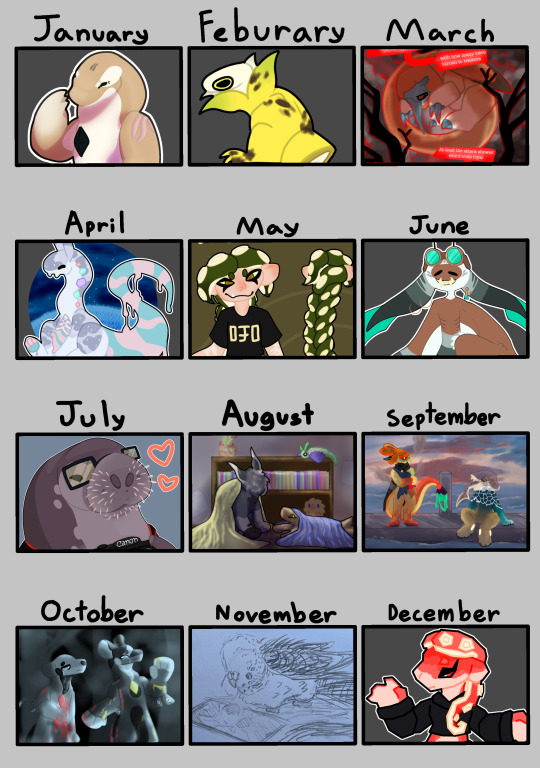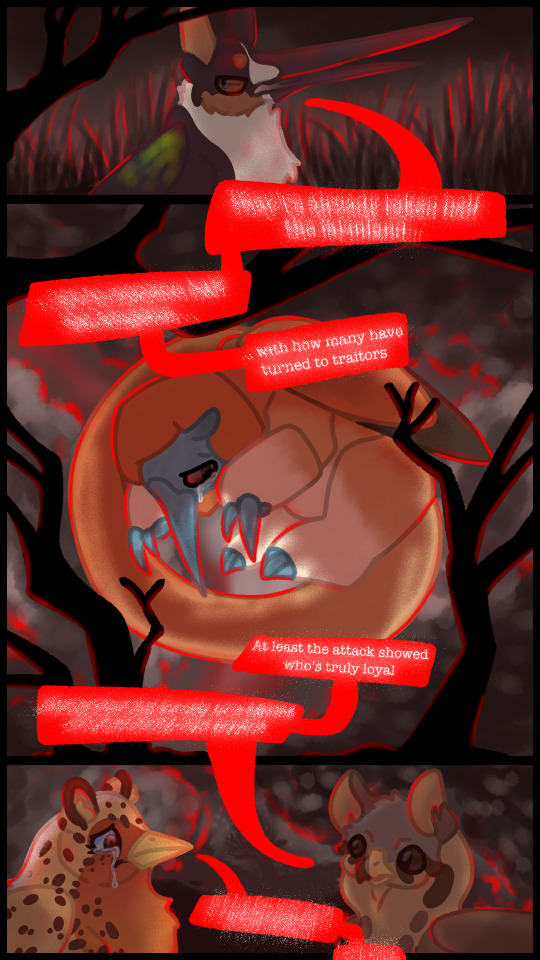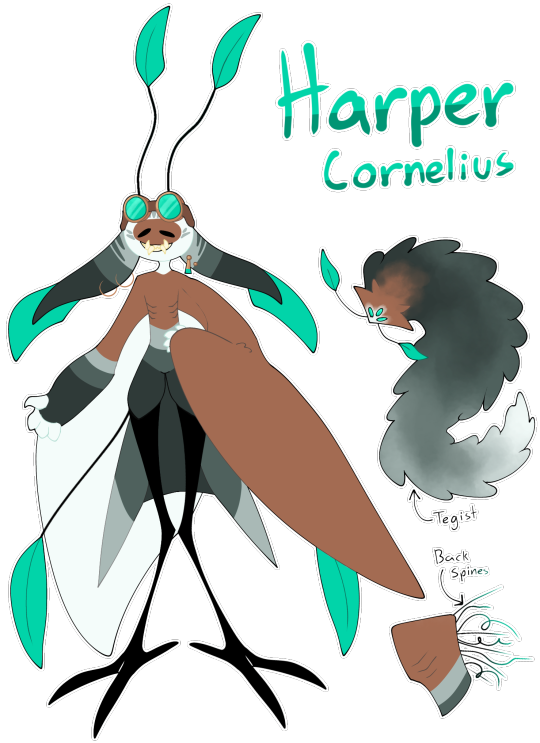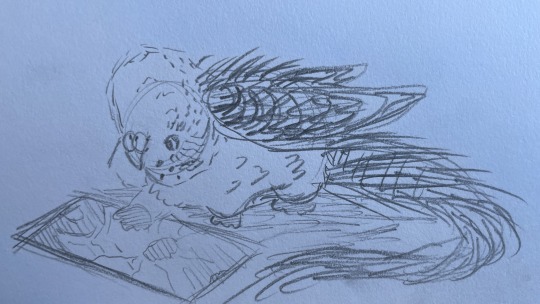#angular 7 improvements
Explore tagged Tumblr posts
Text
arabic numerals ranked from worst to best by their potential as the lens in new year's glasses
#10: Seven (7)
seven is a very awkward number for a lot of things, and new year's glasses are no exception. its weird angular shape leaves no opening to put a lens in, and unlike the next entry, it's too wide to comfortably squeeze between lens in the second and fourth digits. and the impressive thing about 7 is that this is a number with plenty of writing variations, and yet i can't think of a single one that makes it an efficient lens! sorry 7. i think you're the best number for a rating scale, but that's about it.
#9: One (1)
the 2010s were a rough time for new year's glasses, huh? coming off the high of the 1990s and 2000s, people were determined to make the 2010s work, but that's a tall fucking order. the saving grace of 1, and the reason it's above 7, is that it's skinny enough that you can slide it between numbers and use the fourth digit of the year as the lens, but the fact you have to resort to that is only further evidence of how much 1 sucks at being the lens.
#8: Two (2)
two is definitely a tier above the previous two entries. it's an interesting and versatile enough shape that you can mess with it to try and make a viable spot for a lens, what with the upper loop and lower angle, but i feel no matter what you try, you always gotta make some concessions. like, you have enough to work with that a talented enough designer can make something that works, but usually the result is more "functional" than "good".
#7: Four (4)
now we're getting into numbers that could actually make for passable lenses. i mean, check it out! we have a closed loop here and everything, that has GOT to count for something! what makes me put four relatively low on the list is that with its right-triangle shape, i can't imagine it being a very comfortable shape for a lens, especially with how much ends up sticking out and downwards. still, a vast improvement over the previous three entries, even if it's basically just a worse 9.
#6: Five (5)
i feel like depending on what you prioritize in new year's glasses, these next two entries could end up going below the previous one, but personally, i think the not-closed round loop feels like a more practical spot for a lens than 4's closed-but-angular loop, y'know? so what if the loop isn't closed, it still mostly surrounds your eye, and feels generally passable to me. this is a number that wouldn't inspire the idea for new year's glasses, but certainly works now that the idea has been established.
#5: Three (3)
three is basically the same thing as 5, and i could even see some people putting it below 5, since 5's loop is a bit closer to being closed than either of 3's loops. that being said, 3's dual-loop is ultimately what gives it the edge to me. it ends up feeling more versatile to me. i feel the bottom loop is generally the correct choice, but just having the option of the top loop as well really helps it out. either way, after suffering through the 2010s and 2020s, i expect the 2030s to be a welcome breath of fresh air.
#4: Nine (9)
now we're getting to the really good ones. i mean, the 1990s are when the trend of new year's glasses started! if this number was good enough to kickstart the trend, then clearly it's a good number to put the lens in. having a closed round loop really goes a long way, it turns out! what puts 9 below the next three entries is the tail. having that swoop down towards your face feels like it'd be a bit uncomfortable, and this issue doesn't crop up with the next three entries. still, 9 is a trailblazer and its place in the New Year's Glasses Metagame needs to be respected.
#3: Six (6)
if 9's only issue is the tail getting all up in your face, then what better way to solve that then just turning it upside-down? it might just be me, put having it brush up against your forehead feels much, much less intrusive than having it brush up against your face. and plus, it can give the impression of a raised eyebrow! bonus! the 2030s-2050s are going to be a refreshing breath of fresh air following the awful new year's glasses of the 2010s and 2020s, but the 2060s are going to be a true new year's glasses renaissance.
#2: Eight (8)
hey, so remember how i put 3 above 5 since i felt the double loop made it a bit more versatile? well now imagine that, but both loops are closed. 8 makes for such a good lens, it's a little surprising we didn't see new year's glasses in the 1980s (i'm guessing having two of the same number is more inspiring than two different numbers?) either way, eight isn't content to give you just one closed loop. it'll give you a second closed loop right above. (or below!) 8 is a versatile number with many options, and i hope i can live to see the day we see it in new year's glasses. a true stand out in its field.
#1: Zero (0)
still, even with all the good years ahead, it's hard to ignore the fact that the best years are sadly behind us, with the 2000s being the absolute pinnacle of new year's glasses design. i mean, come on. a single loop with no frills is basically what glasses designs default to already, so using the middle two zeroes as the lens for glasses? impeccable design. the 1990s were good enough to kickstart the trend, but the 2000s were good enough to make us want to brute force the 2010s and 2020s. if that's not the mark of a good design, i don't know what is.
sadly, it's likely we'll never see design this good again. the next year with the middle two digits being two zeroes is 3000, and while we might be able to execute double-zero designs at the turn of each century, they'll end up looking weirdly lopsided in the process. i believe humans are hubristic enough to try and brute-force bad decades, but multiple bad centuries? forget about it.
oh well. happy new year

690 notes
·
View notes
Text
Solar Observations pt. 7
readings are open! ⛓️
please take with a grain of salt ⛓️
I used orbs of 3 degrees for aspects from whole signs ⛓️


👾 some of my best sr years have been the years where i’ve had the same sr venus as my natal
👾 looking at the persona chart of your profected year lord can give you a lot of insights for the year ahead i’ve found
👾 chiron on the mc (both solar or natal x solar) shows a year of yearning for something very badly (most likely to be career/goal/experience related)
👾 having positive mercury-saturn aspects (including conjunction depending on sign) is a year where you are on top of your shit, maybe you feel like you conversations with others are thwarted in some way but better than most you’re preparing for something bigger, plans, plans, PLANS!!
👾 saturn conjunct mercury is a really interesting aspect actually for a solar return. it maybe harder to categorize and to process the world around you in a productive way, but you may also learn new subjects/wisdom.
👾 having venus at 28 degrees can indicate an exciting love/crush/relationship happening for that year
👾 moon at 29 degrees can show that from that year on out you will approach life from a very different mindset to what you had before. this mindset can last for a year or your entire life but either way it’s an anaretic degree so BIG STUFF! the sign can show what mindset you’re “ending” (ex: i had moon at 29 degrees in taurus in 2020 and from that year on out i really prioritized productivity and worked to stop my lazy/indulgent habits)
👾 planets at 20 degrees and what house those planets are in can show what themes/events prove to be very mystical or witchy that year. (ex: i had mars and neptune at 20 degrees with mars in the 7th and neptune in the 11th and that year i got back with my old friend group out of random chance and went on my first date with someone from that group😭😭 not me telling you guys my life tea. dating within friend groups is weird and would not recommend btw! but to each their own🩷)
👾 planets at the 1st degree + their houses show where you’re ambitious and what you desire, expect lots of action in these areas

👾 1st house ruler in 1st (aka your chart ruler in one of its domicile places) may mean that your by yourself or more alone, but most likely NOT in a bad way!! (self-care, self-improvement, reflection, etc…). check other houses that the planet rules to see what other important themes are emphasized that year (ex: libra venus in 1st house —> 8th house themes are important as well because taurus rules over the 8th)
👾 going off from the previous observation, planets in angular houses (1, 4, 7, 10) will ALWAYS be prominent throughout your year especially if they’re in domicile/exaltation/detriment/fall.
👾 a lot of celebrities have gotten big time famous the year where they had their 11th house in their 11th (ex: megan thee stallion, doja cat, billie eilish, etc…)
👾 just a tip, but make persona charts of your solar planets! if you don’t know how, go to astro.com, charts and calculations, extended chart selection, blue plus sign in the top right corner then fill out info from your solar return chart. after making this, click the “natal chart” tab, scroll down to “persona chart” :)
👾 jupiter/sagittarius in the 3rd or jupiter-mercury aspects show a lot of activity for the year ahead. fire/air = adventurous/fun activity, water/earth = self-growth/learning related (but arguably the themes can overlap), mercury in the third house is also indicative of a busy year!
👾 when i had mars in my natal 12th house last year i stayed up souper late almost every night regardless of weekend/weekday
👾 planets at 5 degrees show where there’s a lot of exciting things happening (ex: venus at 5 degrees -> lots of interesting meetups with friends, starting new hobbies, etc…, juno at 5 degrees -> partnerships open up new feelings of happiness, feeling loved, etc…). creds to @astrosky33 for this one!
👾 pay attention to the aspects made to your vertex for the year! and also what house the vertex falls in in your natal house. a couple years ago i had venus in my solar 4th trine my solar vertex in 8th conjunc turanus and was able to spend more time resting and doing fun things at home because unexpectedly (uranus) responsibilities/burdens placed upon me were lifted
👾 mars in the 12th house (including solar x natal) can show that you’re trying to break out of bad habits
👾 moon in fire signs can show a time of unrest or lots of physical activity at home, you have a lot of energy to do activities whether they’re serious activities or not
💜🤍💜🖤💜🤍💜🖤💜🤍💜🖤💜
hope you enjoyed!
#astro community#astrology observations#solar return observations#solar return chart#solar return#sr chart#astro observations#astrology tumblr#astroblr#aries zodiac#taurus#gemini placements#cancer#leo placements#virgo zodiac sign#libra placements#scorpio#sagittarius#capricorn#aquarius#pisces#astrology notes#astro notes#lunar astrology#moon placements#mercury astrology#saturn astrology#10th house#midheaven#vertex
526 notes
·
View notes
Text
🎄🎵Have Yourself a Merry Little Christmas🎵🎄
Holiday (365443) persona chart observations
🎅 Individuals with Ascendant at 1° or 3° get really excited in advance at the thought of Christmas coming. They tend to approach the holidays with the same innocent joy they had as kids even in adulthood
🎅 Stellium in 2nd house = tasty Christmas dishes and gifts are their only priority lmao
🎅 Neptune trine Venus tend to get lost in the beauty and bling of Christmas decorations
🎅 The sign and house where Jupiter is located tells you what type of gifts you might usually get on Christmas (it's also great to use as a gift guide!!):
🎁 Jupiter 1st house/Aries: gym equipment; sports-related merch; tickets to an event, which you're really passionate about; hats/head accessories; could also be something related to the natal Ascendant (check the description for your natal Rising sign for more info)
🎁 Jupiter in 2nd house/Taurus: lots of chocolate and sweets; clothes; art pieces; scented candles; perfume; fine china; kitchen utensils; cookbooks; (renewed) subscription to a movie streaming service
🎁 Jupiter in 3rd house/Gemini: a (new) car; books; musical instruments; handpan (if Jupiter is in Pisces or it positively aspects Neptune); your most memorable gift might come from a sibling or a relative (cousin, uncle, aunt)
🎁 Jupiter in 4th house/Cancer: plushies; heated blanket; board games; photo albums; your most memorable gift might come from your parents or it might be something passed on from generation to generation
🎁 Jupiter in 5th house/Leo: concert tickets; a trip to the tattoo parlor; gold jewelry; could also be something related to the natal Sun
🎁 Jupiter in 6th house/Virgo: Fitbit/smartwatch; aesthetic stationery (notebooks, planners, writing instruments); reusable water bottle; humidifier; pets
🎁 Jupiter in 7th house/Libra: make-up; beauty gadgets; a romantic partner/fiancé (no, but fr, you might get a love confession during the holidays); your most memorbale gift likely might come from your partner (if you have one)
🎁 Jupiter in 8th house/Scorpio: money/gift cards; sexy time toys; stockings; could be something the individual is obsessed with
🎁 Jupiter in 9th house/Sagittarius: trips to exotic destinations; henna hair dye; compression socks
🎁 Jupiter in 10th house/Capricorn: vintage decor; office chair; office purse (or just one that screams "high status"); sterling silver jewelry; high quality alcohol drinks
🎁 Jupiter in 11th house/Aquarius: electronic devices (smartphone, laptop, tablet, etc.); video games; anything related to supernatural beings (aliens, mermaids, fairies etc.); telescope; anything you've wished for/been manifesting
🎁 Jupiter in 12th house/Pisces: anything sleep related - pajamas, bed sheets, pillow sheets (or a new pillow), silk sleepmask; crystals; manifestation journal; tarot decks; art supplies
🎅 Christmas traditions based on the number of planets in angular/succedent/cadent houses:
❄️ High number of planets in angular houses (1, 4, 7, 10) = starting new family traditions
❄️ High number of planets in succedent houses (2, 5, 8, 11) = carrying out family traditions
❄️ High number of planets in cadent houses (3, 6, 9, 12) = tweaking/improving current family traditions or letting them go if they don't resonate anymore
🎅 Sun square/opposite Saturn & Ascendant conjunct/square/opposite Saturn = Grinch who doesn't like Christmas, but doesn't do anything to "destroy" it; might show a lot of sarcasm during the holidays; they might not celebrate Christmas due to reasons related to their position of Saturn
🎅 Sun square/opposite Mars = Grinch who doesn't like Christmas, but actively tries to "destroy" the holiday spirit for the people around them by picking up fights with loved ones
🎅 If you want to "hire" a Santa to show up with gifts for your kids on Christmas (aka choose one of your friends to fulfill this role), the best Santa would have atleast 3 of the following:
Sun conjunct/sextile/trine Jupiter
Venus conjunct/sextile/trine Jupiter
Sun/Moon in 5th house
Jupiter in 2nd house/5th house
Jupiter conjuncting MC
Sagittarius Rising or Jupiter as dom planet
Ruler of 2nd house (benefic planet) in 5th house and vice versa
Asteroid Abundantia (151) conjuncting Venus/Jupiter

❆❆❆ ~ 𝕸𝖊𝖗𝖗𝖞 𝕮𝖍𝖗𝖎𝖘𝖙𝖒𝖆𝖘, 𝖊𝖛𝖊𝖗𝖞𝖔𝖓𝖊 ~ ❆❆❆
#astro#astro community#astrology#astro placements#astro observations#astro posts#astroblr#astro blog#astro notes#persona chart#jupiter#christmas astrology
371 notes
·
View notes
Text
HOW TO DETERMINE THE EFFECTS OF A PLANET IN A VEDIC HOROSCOPE
In Vedic astrology (Jyotish), astrologers determine the effects of planets based on their position in a person’s horoscope (or birth chart) by analyzing several key factors :
Lets see it step by step
1. Planetary Position in the Zodiac Signs (Rashi)
Each planet is placed in a specific zodiac sign at the time of birth. The 12 zodiac signs are ruled by different planets, and each planet behaves differently in each sign. The effect of a planet is influenced by whether it is:
Exalted: A planet is in its strongest position in certain signs. For example, the Sun is exalted in Aries, and Venus in Pisces.
Debilitated: A planet is weakened in certain signs. For instance, the Sun is debilitated in Libra, and Venus in Virgo.
Own Sign: When a planet is in a sign it rules, it becomes stronger and comfortable (e.g., Mars in Aries or Scorpio).
Neutral or Enemy Sign: The effects are moderated or challenging if the planet is in a sign ruled by an enemy or neutral planet.
2. House Placement (Bhava)
The horoscope is divided into 12 houses, each representing a different area of life (career, family, marriage, health, etc.). The planet's placement in a specific house determines the area of life where its energy will manifest. The houses are classified as:
Kendra (1st, 4th, 7th, 10th): These are strong, central houses where planets usually gain strength.
Trikona (1st, 5th, 9th): These are auspicious houses representing Dharma, where planets tend to produce favorable results.
Dushtana (6th, 8th, 12th): Planets in these houses often bring challenges or obstacles.
Upachaya (3rd, 6th, 10th, 11th): Over time, planets here tend to improve and become more favorable.
3. Aspect (Drishti)
Each planet influences other planets and houses by casting aspects. For example:
Most planets cast their full aspect on the 7th house from their position.
Mars additionally aspects the 4th and 8th houses from its position.
Jupiter aspects the 5th and 9th houses.
Saturn aspects the 3rd and 10th houses.
These aspects modify the energy of the planet or house being aspected, for better or worse.
4. Strength of the Planet (Shadbala)
Astrologers assess the strength of planets using a system called Shadbala (Sixfold Strength), which evaluates:
Positional Strength: Strength in exaltation, house placement, etc.
Directional Strength (Dig Bala): Planets are stronger in certain directional houses. For example, Jupiter and Mercury gain strength in the 1st house (East).
Temporal Strength (Kala Bala): Strength based on the time of day, such as the Sun being stronger during the day and the Moon at night.
Motional Strength (Cheshta Bala): Planets are stronger when retrograde.
5. Yogas (Planetary Combinations)
Special combinations of planets create yogas, which can bring exceptional success, wealth, or challenges in life. Some important yogas include:
Raja Yogas: When planets form favorable combinations between Kendra (angular) and Trikona (trinal) houses, indicating power and prosperity.
Dhana Yogas: These combinations signify wealth.
Arishta Yogas: Negative combinations that may bring obstacles or misfortune.
6. Dasha System (Planetary Periods)
Vedic astrology uses the Vimshottari Dasha system to predict when certain planetary influences will dominate a person’s life. Each planet has a specific period (dasha), during which its effects will be more pronounced. The dasha can be favorable or unfavorable depending on the planet’s strength, house placement, and aspects.
7. Nakshatras (Lunar Mansions)
The zodiac is also divided into 27 nakshatras (lunar constellations), which add another layer of interpretation. Each planet’s placement in a particular nakshatra modifies its effects, often revealing more detailed traits of personality and life events.
8. Chalit Chart and Divisional Charts
Besides the main birth chart (Rasi chart), Vedic astrologers analyze divisional charts (Vargas) to understand specific aspects of life. For example:
Navamsa (D9): Provides insights into marriage, relationships, and overall fortune.
Dashamsa (D10): Focuses on career. The Chalit chart shows where planets are based on actual house placement rather than just sign placement.
Example:
If Mars is exalted in the 10th house (career) and aspects the 4th house (home), the person may experience energy and ambition in their career, potentially leading to conflicts or changes in their home life due to Mars’ aggressive nature.
Astrologers combine these elements to provide a holistic interpretation of how planetary energies shape different aspects of a person’s life.

#planets effects in vedicastrology#vedic astrology#vedic astrologer#horoscope posts#horoscope analysis#horoscope readings#horoscopes#vedicastrology#astrology#astrologer#horoscope#daily horoscope#daily astrology#remedies#vedic jyotish#indian jyotish
19 notes
·
View notes
Note
Hi! Im here for the game :)
Date/hour : January 7 , 2004, 1:53pm
City : Aracatuba,brazil
Im not a tarot reader, is there something u want us to do?
Hi @softviolettclouds 😊 Thank you for being here💕 No there is no need👌
Your future spouse can have masculine features; prominent thin/flexible thighs/legs; strong bone structure and jawline; pouty features; angular features; youthful appearance; short to average height (can look short if they gained weight or tall if they are skinny); prominent chest/abs/tummy; black/dark complexion or brownish tan with reddish tones; dark to light from toe to head (for example they could have darker legs than their hands); long/thick/curly hair (could have this at some point in their life); beautiful seductive eyes; birthmark/beauty cut on their face (eyebrow/mouth/chin); prominent chin (butt chin); joint issues; big eyelids; square face; dimples; caterpillar eyebrows or dark eyebrows; alien eyes; gummy smile; strong hips; big wide forehead (wrinkles); etc.
Okay I think I am done😅 I hope you like this reading if you do leave feedback on my page🙏 And let me know if it resonates👌it helps improving my readings💜
5 notes
·
View notes
Text

Russian stealth hunting Su-57 is ready for export
Announcement was made by FSMTC employees at the Dubai Air Show.
Fernando Valduga By Fernando Valduga 11/14/2023 - 08:31am Dubai Air Show, Military
Russia is ready to receive export orders for its Su-57 poaching after completing its development program.
Officials of the Federal Service for Military-Technical Cooperation (FSMTC) declared at the ongoing Dubai Air Show that, "if our foreign partners contact us, we are ready to start working on this topic". They noted that several customers are already showing “growing interest” in Su-57 aircraft.
Since the end of 2022, the Russian Aerospace Forces have received three batches of Su-57, most of which are actively involved in the ongoing conflict in Ukraine. Notably, some of these aircraft have the latest 'Product 30' engine, also recognized as the 'second stage', improving the thrust and super crucing capabilities of the stealth jet.
The Su-57 launches missiles and bombs from its internal compartment - an exclusive feature shared only by a few selected aircraft around the world.

In the field of fifth-generation aircraft available for export, the Russian Su-57 is next to the F-35 as a singular competitor.
Rostec's recent announcement announces the start of the 5ª generation Su-57 serial multifunctional fighter equipment with 2º stage post-combustion turbojet engines, labeled as 'Product 30'. With a post-combustion thrust of 18,000 kgf and a maximum thrust of 11,000 kgf, this advance amplifies the thrust-to-weight ratio of vehicles by 1.2 times (increasing from 1.13 to 1.36 kgf/kg with normal takeoff weight with 63% fuel).
This improvement translates into an increased ascent rate, ranging from 330 to 340-350 m/s, along with an increase in angular velocity during constant curves. In addition, it raises the service ceiling and supersonic cruise flight speed to 2,150-2,200 km/h and the maximum speed to an impressive 2,600-2,700 km/h.
Notably, the engines at the center of this advance were created by the team of the JSC Salyut Gas Turbine Research and Production Center.
Tags: Military AviationDubai AirshowRussiaSukhoi Su-57 Felon
Sharing
tweet
Fernando Valduga
Fernando Valduga
Aviation photographer and pilot since 1992, has participated in several events and air operations, such as Cruzex, AirVenture, Dayton Airshow and FIDAE. He has work published in specialized aviation magazines in Brazil and abroad. Uses Canon equipment during his photographic work in the world of aviation.
Related news
MILITARY
Lockheed Martin partners with European companies at the F-16 training center in Romania
11/13/2023 - 7:35 PM
An NH 90 helicopter of the German Bundeswehr armed forces (top) and a Tiger attack helicopter are seen during an exercise at Holzdorf Air Base. (Photo: REUTERS/Fabrizio Bensch)
HELICOPTERS
HENSOLDT integrates NH90 and TIGER helicopters into modern data link network
13/11/2023 - 16:00
MILITARY
VIDEO: Bayraktar TB3 from Turkey completes its first flight with landed gear collected
11/13/2023 - 2:00 PM
The 737 MAX family offers greater efficiency to enable long-term sustainability goals.
COMMERCIAL
SunExpress will buy up to 90 Boeing 737 MAX jets to boost robust growth
13/11/2023 - 13:00
MILITARY
Bombardier delivers seventh aircraft for Saab's GlobalEye program
11/13/2023 - 11:00
Dubai-based carrier will add 787-9 to the fleet of 737 to open new routes and serve more destinations.
COMMERCIAL
flydubai orders 30 Boeing 787 Dreamliners, its first widebody aircraft
13/11/2023 - 10:00
9 notes
·
View notes
Note
7, 17, 21 for the ask game 🫵
!! I almost didn't see this
7. easiest thing for you to draw?
People, but particularly the characters I draw a lot! I think my oc Cedric is probably the one I can doodle fastest and most consistently. The margins of my school notes are nothing but that little bastard.
17. what is something youre confident about in your art?
Hm, that's a really difficult one because even the things I draw well, I still feel like I have room to improve. I guess I'd say my shape language and character designs overall. Because I take a lot of inspiration from animation, I've always thought it was something that most people just Know, but it's not! Explaining my design process to friends makes me feel like I actually know what I'm doing as an artist.
21. what do you think your artstyle would taste like?
I don't know why, but my first thought was something chewy but somewhat sweet like licorice for my more angular characters or taffy for my softer ones.
2 notes
·
View notes
Text
Top 10 Front-End Frameworks and Libraries for 2024
As the web development landscape continues to evolve, staying updated with the latest front-end frameworks and libraries is crucial for any developer. Whether you're a seasoned pro or just starting out, knowing which tools to use can significantly impact your productivity and the quality of your projects. In this post, we’ll explore the top 10 front-end frameworks and libraries that are set to dominate in 2024.
1. React
React remains one of the most popular front-end libraries, known for its simplicity and flexibility.
Key Features of React
Component-Based Architecture: Reusable components make development efficient and manageable.
Virtual DOM: Enhances performance by minimizing direct DOM manipulation.
Strong Community Support: A vast ecosystem of tools, libraries, and tutorials.

2. Angular
Angular, backed by Google, is a powerful framework for building dynamic single-page applications (SPAs).
Why Choose Angular?
Two-Way Data Binding: Synchronizes data between the model and the view.
Dependency Injection: Improves code maintainability and testability.
Comprehensive Documentation: Extensive resources for learning and troubleshooting.

3. Vue.js
Vue.js has gained popularity due to its gentle learning curve and versatility.
Advantages of Vue.js
Reactive Data Binding: Simplifies state management.
Single-File Components: Encapsulate HTML, CSS, and JavaScript in one file.
Flexibility: Can be used for both large-scale and small-scale applications.

4. Svelte
Svelte is a relatively new player that compiles components into highly efficient vanilla JavaScript at build time.
Svelte’s Standout Features
No Virtual DOM: Directly manipulates the DOM for better performance.
Less Boilerplate: Cleaner code with minimal overhead.
Ease of Use: Intuitive and straightforward syntax.

5. Bootstrap
Bootstrap is a front-end framework that provides pre-designed components and a responsive grid system.
Benefits of Using Bootstrap
Responsive Design: Ensures your site looks great on all devices.
Pre-Styled Components: Saves time with ready-to-use UI elements.
Customizable: Easily customize with Sass variables and Bootstrap’s extensive options.

6. Tailwind CSS
Tailwind CSS is a utility-first CSS framework that allows for rapid UI development.
Tailwind CSS Features
Utility-First Approach: Use utility classes directly in your HTML.
Customizable: Extensive configuration options to suit your project’s needs.
Consistency: Enforces a consistent design language across your project.

7. Ember.js
Ember.js is a robust framework for building ambitious web applications.
Why Ember.js Stands Out
Convention over Configuration: Reduces the amount of decision-making and boilerplate code.
Strong Routing: Powerful routing capabilities for managing application state.
Productivity: Focuses on developer productivity with built-in best practices.

8. Alpine.js
Alpine.js offers a minimal and lightweight way to add interactivity to your websites.
Key Features of Alpine.js
Lightweight: Small footprint with only a few kilobytes.
Declarative Syntax: Similar to Vue.js, making it easy to understand and implement.
Ease of Integration: Can be easily integrated into existing projects.

9. Next.js
Next.js is a popular React framework that enables server-side rendering and static site generation.
Benefits of Using Next.js
Server-Side Rendering (SSR): Improves performance and SEO by rendering pages on the server.
Static Site Generation (SSG): Pre-renders pages at build time for fast load times.
API Routes: Allows you to create API endpoints within your application.

10. Lit
Lit is a simple library for building fast, lightweight web components.
Advantages of Lit
Web Components: Embraces the web components standard for reusable, encapsulated HTML elements.
Performance: Lightweight and highly performant.
Simple API: Easy to learn and use with a minimal API surface.

Conclusion
Choosing the right front-end framework or library can significantly impact your workflow and the quality of your projects. Whether you prefer the flexibility of React, the structure of Angular, or the simplicity of Svelte, there's a tool out there to suit your needs.
Final Tips for Selecting a Framework or Library
Project Requirements: Consider the specific needs of your project.
Community and Support: Look for frameworks with strong community support and documentation.
Learning Curve: Choose a tool that matches your current skill level and the time you have available to learn.
By staying informed about the latest tools and trends, you can ensure that your skills remain relevant and that you can deliver the best possible results in your projects. Happy coding!
Remember, the best tool is the one that helps you get the job done efficiently and effectively. So, dive into these frameworks and libraries, and take your front-end development skills to the next level!
Share Your Thoughts
I'm curious to know your thoughts on these front-end frameworks and libraries. Have you used any of them in your projects? Which one is your favorite, and why? Share your experiences and insights in the comments below.👇
2 notes
·
View notes
Text
Art Summary 2023!

I think this year has been a big improvement year for me :)
individual pictures of art + more info beneath cut
January

One of my Grimsby Grove (ARPG) characters. Did some experimenting with shading and different line art styles on this one. I drew mostly ARPG stuff this month.
Feburary

I didn’t do much in Feburary but here’s a banana lizard.
March

I’m still super proud of this. It took me I think 7 hours at least?? This is from the Girfugol ARPG, which is most of what I drew during March.
April

I got into a new closed species for a bit, so they were most of what I drew during April. I also did a decent amount of Staves Rest (ARPG) art.
May

First time drawing splatoon. Please do not look at them too long their hands and feet are terrifying </3 I have improved a lot at humanoid things since this.
June

Mostly refs this month because ArtFight coming up. I’m really proud of this one, I rarely take the time to actually make thin line art like this.
July

Artfight!! (Character belongs to Tyrell on Artfight)
August

Lots of Staves Rest. Working on improving backgrounds this month.
September

More Staves Rest and more background improvement!
October

Grimsby Grove Halloween. Did some more experimental stuff this month.
November

Not much art this month, but I did some doodles of my Girfugol characters :)
December

Tybee!!! As a creature!!! These kind of splatoon an are called Xenos lr something, right? Anyways, Tybee is my beloved. He has so much lore living in my brain <3 Tried out an angular style with this. Other than this, not much art in December. Too much stuff going on with school.
That’s it! Honestly can’t believe a year has passed, some of this stuff feels ancient and some of it feels like yesterday.
Happy New Year!!
#art summery 2023#art summary#my art#clovechicken#Splatoon#staves rest#grimsby grove#girfugol#clove gibberish
3 notes
·
View notes
Text
Freelance Web Development Courses: Kickstart Your Career
The world of freelance web development is rapidly expanding. With more businesses going digital, the demand for skilled Freelance Web Designers and Freelance Web Developers has never been higher. Whether you're looking to become a Freelance Website Designer Singapore or upgrade your current skills, taking the right web development courses is a crucial step toward success.
This article explores the best freelance web development courses available, both free and paid, while helping you understand how they align with your goals as a Web Developer Singapore, Freelance Website Developer, or Website Designer Singapore.
Why Courses Matter in Freelance Web Development
The freelance industry values both experience and knowledge. Even if you're self-taught, completing recognized courses can help you stay competitive and earn client trust. If you aim to work in a competitive market like web design Singapore, certifications and formal training can give you an edge.
For a Freelance Web Designer Singapore, courses can improve not only technical skills but also soft skills such as client communication and time management.
1. freeCodeCamp – Responsive Web Design Certification
freeCodeCamp offers a highly regarded free certification in Responsive Web Design. This course covers HTML, CSS, Flexbox, Grid, and responsive design principles.
It’s ideal for a beginner Freelance Web Developer or someone looking to break into the Freelance Website Developer Singapore market. You’ll build real projects that can go into your portfolio.
2. Coursera – Meta Front-End Developer Professional Certificate
Meta (formerly Facebook) offers this comprehensive program on Coursera. It includes HTML, CSS, JavaScript, React, and even UI/UX design concepts. You also get a certificate from Meta.
This course is excellent for aspiring Website Developer Singapore professionals aiming to work in front-end development.
It’s a high-value credential for any Freelance Web Designer Singapore wanting to gain global recognition.
3. Google UX Design Professional Certificate (Coursera)
This course focuses on user experience design, research, and prototyping tools like Figma. It's perfect for Freelance Website Designers who want to understand the psychology and strategy behind beautiful, functional websites.
In markets like Singapore, where design standards are high, understanding UX can set a Freelance Website Developer Singapore apart from the competition.
4. Udemy – The Web Developer Bootcamp (by Colt Steele)
This is one of the most popular and comprehensive courses on Udemy. It includes HTML, CSS, JavaScript, Node.js, MongoDB, and Express. It’s ideal for those who want to become full-stack developers.
Whether you’re a Freelance Web Developer Singapore or a Website Designer Singapore, this course offers end-to-end web development skills.
The lifetime access and frequent updates make it a great long-term investment.
5. edX – W3C Front-End Web Developer Program
Developed by the World Wide Web Consortium (W3C), this course on edX teaches web standards and technologies like HTML5, CSS, and JavaScript.
This course is great for beginners as well as experienced Web Designers Singapore who want to polish their fundamentals and earn a globally respected certificate.
6. LinkedIn Learning – Become a Web Developer Learning Path
LinkedIn Learning offers curated course bundles that cover everything from the basics to advanced topics like API integration and server-side scripting.
It’s perfect for a Freelance Web Developer, and completing these courses can also enhance your LinkedIn profile—useful for networking with potential clients in web design Singapore.
7. General Assembly – Web Development Immersive
General Assembly offers intensive bootcamps in cities worldwide, including Singapore. Their full-time and part-time web development courses cover HTML, CSS, JavaScript, Git, and frameworks like React and Angular.
Perfect for those looking to transition into a full-time freelance career, whether as a Freelance Web Developer Singapore or a Website Developer Singapore.
8. The Odin Project
The Odin Project is a free and comprehensive curriculum that covers full-stack development using HTML, CSS, JavaScript, Node.js, and databases.
It’s excellent for someone who wants to become a self-taught Freelance Website Developer. You'll build real-world projects—great for your portfolio if you want to offer web design Singapore services.
9. Skillshare – Web Design and Freelance Courses
Skillshare offers shorter, project-based courses in web design, UI/UX, and freelancing. While not as in-depth as bootcamps, they’re perfect for learning specific skills quickly.
A Freelance Web Designer Singapore or Website Designer Singapore looking to sharpen a particular skill like typography, wireframing, or branding can benefit greatly.
10. Pluralsight – Paths for Front-End and Back-End Developers
Pluralsight offers expert-led, structured learning paths in various web technologies. Their assessments help you gauge your current skill level, making it ideal for intermediate and advanced developers.
It's a solid option for Freelance Website Developer Singapore professionals who want continuous learning.
What to Look for in a Web Development Course
Choosing the right course depends on your career goals. Here are a few factors to consider:
1. Course Content
Make sure it covers both front-end and back-end if you're aiming to be a full-stack Freelance Website Developer.
2. Hands-on Projects
Courses that include real-world projects are more valuable, especially for building your portfolio as a Freelance Web Designer Singapore.
3. Certifications
While not always mandatory, certificates can enhance your credibility, especially if you're just starting out in web design Singapore.
4. Community Support
A good learning platform should offer forums, peer reviews, or mentorship. These features are incredibly helpful for Freelance Web Developers working independently.
Freelancing-Focused Courses
Apart from technical skills, you need to understand how to manage your freelance business.
1. Freelancing 101 (by And Co)
This free course includes tips on setting rates, handling contracts, and finding clients—perfect for a Freelance Website Designer.
2. Skillshare – Building a Freelance Web Design Business
Tailored for Freelance Web Designer Singapore professionals, this course dives into client management, branding, and pricing models.
Certifications That Add Value in Singapore
In Singapore, credentials matter. Here are some certifications that boost your resume:
Google UX Design Certificate
W3C Front-End Developer Certificate
AWS Certified Cloud Practitioner
Meta Front-End Developer Certificate
Adobe Certified Professional – Web Authoring
These are valuable whether you're a Website Developer Singapore or a Freelance Website Designer Singapore offering services to corporations or startups.
Career Paths After Taking Courses
Once you've completed one or more of these courses, you’ll be equipped to take on various roles:
Freelance Web Developer for small businesses
Freelance Website Designer Singapore specializing in e-commerce
Web Developer Singapore offering full-stack solutions
Website Designer Singapore focusing on branding and UI/UX
The key is to continue learning and updating your portfolio. The more you apply your skills in real projects, the more you grow.
Final Thoughts
Freelance web development is one of the most rewarding career paths in the digital era. The right courses not only teach you how to code but also how to think critically, solve problems, and manage clients.
Whether you're a complete beginner or looking to specialize further as a Freelance Web Designer, Freelance Website Developer, or Web Designer Singapore, there's a course out there that fits your needs.
As competition grows in markets like web design Singapore, having relevant certifications and up-to-date skills is what sets successful freelancers apart.
Invest in yourself. Learn, build, and grow. The journey to becoming a top-tier Freelance Web Developer Singapore or Website Developer Singapore starts with the right education.Visit https://www.freelancewebdesigner.sg to learn on Website development in Singapore.
#freelance web designer singapore#web design singapore#web designer singapore#website developer singapore#web developer singapore#website designer singapore
0 notes
Text
HTML Interview Questions and Answers for Beginners in 2025

If you’re just starting your journey in web development, one of the first technologies you’ll encounter is HTML—the foundational language for creating web pages. Whether you're preparing for your first job interview or an internship opportunity, being confident in HTML interview questions and answers can set you apart from other candidates.
In this blog, “HTML Interview Questions and Answers for Beginners in 2025,” we’ve compiled the most relevant, updated, and beginner-friendly HTML questions that hiring managers are likely to ask this year. These questions are designed to not only test your basic understanding but also help you think critically about how HTML is used in real-world scenarios.
Why HTML Knowledge Is Crucial in 2025
HTML (HyperText Markup Language) remains the backbone of every website on the internet. Even with advancements in frameworks like React, Angular, and Vue, the core of all web development still starts with HTML. That’s why interviewers consistently assess your understanding of HTML—especially if you’re applying for roles like:
Front-End Developer
Web Designer
UI Developer
Full-Stack Developer (Entry-Level)
In 2025, as more companies move towards web-first experiences, HTML knowledge remains a must-have skill.
HTML Interview Questions and Answers for Beginners
Here’s a curated list of beginner-friendly HTML questions with simple yet effective answers to help you ace your interview.
1. What is HTML?
Answer: HTML stands for HyperText Markup Language. It is the standard markup language used to create web pages. HTML uses a set of elements (called tags) to define the structure and content of a webpage.
2. What are HTML tags and elements?
Answer: HTML tags are used to mark the beginning and end of an element. Example: <p> is an opening tag, and </p> is a closing tag. An HTML element includes the opening tag, content, and closing tag. Example: <p>This is a paragraph.</p>
3. What is the difference between HTML and HTML5?
Answer: HTML5 is the latest version of HTML. It introduces new tags (<article>, <section>, <video>, <audio>, etc.), supports audio/video embedding, and improves semantic structure and browser compatibility.
4. What is the role of the <head> and <body> tags in HTML?
Answer:
contains meta information about the document (title, links, scripts).
contains the visible content that displays in the browser window.
5. What is a semantic tag in HTML5?
Answer: Semantic tags describe the meaning of the content inside them. Examples include <header>, <footer>, <article>, <nav>, and <section>. They improve code readability and SEO.
6. What is the difference between <div> and <span>?
Answer:
is a block-level element used to group larger sections of content.
is an inline element used to group small chunks of content inside other elements.
7. What is the purpose of the alt attribute in the <img> tag?
Answer: The alt (alternative text) attribute provides a text description of the image, which is helpful for screen readers and when the image cannot be displayed.
8. How do you create a hyperlink in HTML?
Answer: Use the <a> tag. Example:
<a href="https://example.com">Visit Example</a>
9. How can you insert a list in HTML?
Answer: There are two types:
Ordered list () – for numbered items
Unordered list () – for bullet points
Example:
<ul> <li>HTML</li> <li>CSS</li> <li>JavaScript</li> </ul>
10. What is the use of the <form> tag in HTML?
Answer: The <form> tag is used to collect user input. Inside a form, you can use input fields, buttons, checkboxes, and other elements to capture data and send it to a server.
11. How do you add a comment in HTML?
Answer: HTML comments are written like this:
<!-- This is a comment -->
12. Can you nest one HTML element inside another?
Answer: Yes, HTML elements can be nested. Proper nesting is essential for the correct rendering of a page. Example:
<p>This is <strong>important</strong> text.</p>
13. What are empty elements in HTML?
Answer: Empty elements do not have closing tags. Example: <br>, <img>, <input>, <hr>
14. What is the purpose of the doctype declaration?
Answer: The <!DOCTYPE html> declaration tells the browser which version of HTML is being used and helps render the page correctly.
15. What are meta tags?
Answer: Meta tags provide metadata about the webpage, such as character encoding, viewport settings, keywords, and descriptions. They go inside the <head> section.
Example:
<meta charset="UTF-8"> <meta name="description" content="Learn HTML interview questions for beginners.">
Final Thoughts
HTML is not just about writing tags—it's about structuring content properly so browsers and users can understand it. By mastering the questions in this blog, "HTML Interview Questions and Answers for Beginners in 2025," you'll gain the confidence to answer any foundational HTML question thrown your way.
Here’s how to make the most of this guide:
Practice writing each tag and structure by hand Build small projects to test your understanding Review real-world examples of semantic HTML Stay updated with HTML5 best practices
Ready for the Interview?
Whether you're preparing for an internship, a junior developer role, or even freelance web design work, these HTML interview questions and answers for beginners are your starting point. Learn them, understand them, and practice explaining them clearly—that’s the key to acing your next interview in 2025.
#HTML interview Question#HTML interview Question for beginners#Interview question for freshers#python for beginners
0 notes
Text
The Future of Web Development: Trends and Strategies for 2024
Introduction
In today’s digital age, web development is more crucial than ever. Businesses like City Insider Inc rely on cutting-edge websites to engage users, drive sales, and establish a strong online presence. With rapid advancements in technology, staying updated on the latest trends in web development is essential for creating fast, secure, and user-friendly websites. This article explores the top trends, tools, and best practices shaping the future of web development in 2024.
1. The Rise of AI and Machine Learning in Web Development
Artificial Intelligence (AI) and Machine Learning (ML) are revolutionizing web development. From chatbots that enhance customer service to personalized content recommendations, AI-powered tools are making websites smarter. Platforms like City Insider Inc can leverage AI to analyze user behavior, optimize SEO, and automate repetitive tasks. Tools such as TensorFlow.js and OpenAI integrations allow developers to build dynamic, intelligent web applications with ease.
2. Progressive Web Apps (PWAs) for Enhanced Performance
Progressive Web Apps (PWAs) combine the best of websites and mobile apps, offering offline functionality, push notifications, and fast loading speeds. For businesses like City Insider Inc, PWAs provide a seamless user experience across all devices. Companies like Twitter and Pinterest have already seen significant engagement boosts by adopting PWAs. With frameworks like React and Angular, developers can build high-performing PWAs that improve retention and conversions.
3. Voice Search Optimization and Voice-Activated Interfaces
With the growing popularity of smart speakers like Alexa and Google Home, voice search optimization is becoming a key focus in web development. Websites must now be structured to answer voice queries naturally. City Insider Inc can stay ahead by implementing schema markup and optimizing for long-tail keywords. Additionally, integrating voice-activated navigation into websites enhances accessibility and user experience, making it a must-have feature in 2024.
4. Motion UI and Interactive Design Elements
Engaging visuals and micro-interactions are dominating modern web development. Motion UI—such as animated buttons, scroll-triggered effects, and 3D graphics—creates immersive experiences. Tools like Framer Motion and GSAP help developers implement smooth animations without compromising performance. For City Insider Inc, incorporating interactive design elements can increase user engagement and reduce bounce rates.
5. Cybersecurity and Privacy-First Development
As cyber threats increase, prioritizing security in web development is non-negotiable. GDPR compliance, HTTPS encryption, and regular vulnerability assessments are essential. Businesses like City Insider Inc must ensure secure payment gateways and data protection measures to build trust with users. Frameworks like OWASP provide guidelines for developing hack-resistant websites, making security a top priority in 2024.
6. Serverless Architecture for Scalability
Serverless computing allows developers to build and deploy applications without managing servers, reducing costs and improving scalability. Platforms like AWS Lambda and Firebase enable City Insider Inc to handle traffic spikes efficiently. Serverless architecture also enhances performance by minimizing backend latency, making it ideal for dynamic web applications.
7. Low-Code and No-Code Development Platforms
Not everyone needs deep coding knowledge to build a website anymore. Low-code and no-code platforms like Webflow and Bubble empower businesses to create functional sites quickly. While professional web development still requires custom solutions, these tools allow City Insider Inc to prototype ideas and launch MVPs faster than ever before.
8. The Growing Importance of Core Web Vitals
Google’s Core Web Vitals (loading speed, interactivity, and visual stability) directly impact SEO rankings. Optimizing these metrics ensures a smooth user experience. City Insider Inc can leverage tools like Lighthouse and PageSpeed Insights to audit and enhance website performance. Faster load times and responsive designs lead to higher conversions and better search visibility.
Conclusion
The future of web development is dynamic, driven by AI, PWAs, voice search, and enhanced security. For businesses like City Insider Inc, adopting these trends ensures a competitive edge in the digital landscape. By focusing on user experience, performance, and innovation, companies can build websites that captivate audiences and drive growth in 2024 and beyond.
Stay ahead with cutting-edge web development strategies—partner with experts to transform your online presence today!
0 notes
Text
Web Designing & Development Company | Web Developer
In today’s digital age, having a powerful and responsive website is essential for every business that aims to compete and thrive online. From startups to global enterprises, a professional web presence not only builds trust but also acts as a 24/7 marketing and sales tool. That’s why choosing a reliable web designing and development company is a critical step in your digital transformation journey.
Enter Versatile IT Solutions — a leading name in delivering web development services that drive performance, growth, and customer engagement. With a focus on scalability, innovation, and user experience, Versatile transforms your ideas into fully functional digital solutions that empower your business to succeed.
Why Choose Versatile IT Solutions?
Versatile IT Solutions stands out in a crowded market of development companies thanks to its commitment to delivering results that matter. As an expert web developer company, they focus on understanding your business goals and building a digital product that not only looks great but performs exceptionally.
What Makes Them Different?
✅ Modern Tech Stack: Utilizing cutting-edge technologies like React.js, Angular, Node.js, Laravel, and Django.
✅ Custom Web Solutions: Every website or app is uniquely tailored to match your brand and audience.
✅ Mobile-First Design: All designs are optimized for smartphones and tablets for maximum reach.
✅ SEO-Optimized Code: Websites are built with best practices to boost discoverability and search rankings.
✅ Agile Delivery: Fast, efficient, and collaborative development model with regular updates and iterations.
Comprehensive Web Development Services
Versatile IT Solutions offers a full suite of web designing and development services that cater to businesses of all sizes and industries.
1. Custom Website Development
From personal brand pages to full-fledged corporate websites, they build fast, responsive, and scalable websites that reflect your brand’s identity and values.
2. E-commerce Development
Build powerful online stores with shopping carts, secure payment gateways, inventory management, and seamless checkout experiences. Platforms include WooCommerce, Shopify, Magento, and custom solutions.
3. Web Application Development
Create robust web apps that offer dynamic functionalities and real-time features. Ideal for SaaS platforms, CRMs, booking engines, and more.
4. CMS Development
Manage your content effortlessly with custom or open-source CMS like WordPress, Joomla, or Drupal — designed to give you full control.
5. Landing Page Design
Boost marketing campaigns with high-converting landing pages tailored for lead generation, product showcases, or event registrations.
6. Website Redesign & Optimization
Outdated website? Versatile revamps your site with modern layouts, faster load times, and improved user journeys to increase performance.
Industries They Serve
Versatile IT Solutions brings industry-specific knowledge to the table, providing specialized web development solutions for:
Retail & eCommerce
Healthcare & Medical
Travel & Hospitality
Education & eLearning
Real Estate & Construction
Finance & Insurance
Logistics & Transportation
Whether it’s a booking portal for hotels or an educational platform with real-time student dashboards, Versatile has the experience to deliver high-quality results.
The Web Development Process at Versatile
Their development lifecycle is structured for maximum efficiency, quality, and collaboration:
Discovery & Planning – Understand business objectives, competitors, and user needs.
Design & Prototyping – UI/UX experts craft intuitive designs and clickable prototypes.
Development – Full-stack developers bring the design to life using clean, scalable code.
Testing & QA – Websites are rigorously tested across browsers and devices.
Deployment – Launch-ready site is deployed to a live server with full support.
Maintenance & Support – Continuous updates and performance monitoring to keep things running smoothly.
Real Client Impact
“We partnered with Versatile IT Solutions to redesign our corporate website. The entire experience was smooth, and the end product exceeded expectations. We now receive 3x more inquiries than before.” – Director, B2B Tech Company
“From concept to launch, Versatile’s team was highly professional, communicative, and results-driven. Our eCommerce store now loads faster and performs better.” – Founder, Online Retail Startup
These testimonials speak volumes about Versatile’s client-centric approach and technical expertise.
Ready to Build Your Next Website?
Whether you're starting from scratch or revamping your existing platform, Versatile IT Solutions can help you develop a website or application that brings measurable results. Their team of seasoned web developers and creative designers are ready to collaborate with you to create a digital experience that drives success.
📌 Discover their web development services
📌 Already planning a project? 👉 Start with Versatile
#Web Development Services#Web Designing Company#Web Developer USA#Custom Website Design#Responsive Websites#Versatile IT Solutions#E-commerce Development#Web App Development#CMS Development
0 notes
Text
HOW TO DETERMINE THE EFFECTS OF A PLANET IN A VEDIC HOROSCOPE
In Vedic astrology (Jyotish), astrologers determine the effects of planets based on their position in a person’s horoscope (or birth chart) by analyzing several key factors :
Lets see it step by step
1. Planetary Position in the Zodiac Signs (Rashi)
Each planet is placed in a specific zodiac sign at the time of birth. The 12 zodiac signs are ruled by different planets, and each planet behaves differently in each sign. The effect of a planet is influenced by whether it is:
Exalted: A planet is in its strongest position in certain signs. For example, the Sun is exalted in Aries, and Venus in Pisces.
Debilitated: A planet is weakened in certain signs. For instance, the Sun is debilitated in Libra, and Venus in Virgo.
Own Sign: When a planet is in a sign it rules, it becomes stronger and comfortable (e.g., Mars in Aries or Scorpio).
Neutral or Enemy Sign: The effects are moderated or challenging if the planet is in a sign ruled by an enemy or neutral planet.
2. House Placement (Bhava)
The horoscope is divided into 12 houses, each representing a different area of life (career, family, marriage, health, etc.). The planet's placement in a specific house determines the area of life where its energy will manifest. The houses are classified as:
Kendra (1st, 4th, 7th, 10th): These are strong, central houses where planets usually gain strength.
Trikona (1st, 5th, 9th): These are auspicious houses representing Dharma, where planets tend to produce favorable results.
Dushtana (6th, 8th, 12th): Planets in these houses often bring challenges or obstacles.
Upachaya (3rd, 6th, 10th, 11th): Over time, planets here tend to improve and become more favorable.
3. Aspect (Drishti)
Each planet influences other planets and houses by casting aspects. For example:
Most planets cast their full aspect on the 7th house from their position.
Mars additionally aspects the 4th and 8th houses from its position.
Jupiter aspects the 5th and 9th houses.
Saturn aspects the 3rd and 10th houses.
These aspects modify the energy of the planet or house being aspected, for better or worse.
4. Strength of the Planet (Shadbala)
Astrologers assess the strength of planets using a system called Shadbala (Sixfold Strength), which evaluates:
Positional Strength: Strength in exaltation, house placement, etc.
Directional Strength (Dig Bala): Planets are stronger in certain directional houses. For example, Jupiter and Mercury gain strength in the 1st house (East).
Temporal Strength (Kala Bala): Strength based on the time of day, such as the Sun being stronger during the day and the Moon at night.
Motional Strength (Cheshta Bala): Planets are stronger when retrograde.
5. Yogas (Planetary Combinations)
Special combinations of planets create yogas, which can bring exceptional success, wealth, or challenges in life. Some important yogas include:
Raja Yogas: When planets form favorable combinations between Kendra (angular) and Trikona (trinal) houses, indicating power and prosperity.
Dhana Yogas: These combinations signify wealth.
Arishta Yogas: Negative combinations that may bring obstacles or misfortune.
6. Dasha System (Planetary Periods)
Vedic astrology uses the Vimshottari Dasha system to predict when certain planetary influences will dominate a person’s life. Each planet has a specific period (dasha), during which its effects will be more pronounced. The dasha can be favorable or unfavorable depending on the planet’s strength, house placement, and aspects.
7. Nakshatras (Lunar Mansions)
The zodiac is also divided into 27 nakshatras (lunar constellations), which add another layer of interpretation. Each planet’s placement in a particular nakshatra modifies its effects, often revealing more detailed traits of personality and life events.
8. Chalit Chart and Divisional Charts
Besides the main birth chart (Rasi chart), Vedic astrologers analyze divisional charts (Vargas) to understand specific aspects of life. For example:
Navamsa (D9): Provides insights into marriage, relationships, and overall fortune.
Dashamsa (D10): Focuses on career. The Chalit chart shows where planets are based on actual house placement rather than just sign placement.
Example:
If Mars is exalted in the 10th house (career) and aspects the 4th house (home), the person may experience energy and ambition in their career, potentially leading to conflicts or changes in their home life due to Mars’ aggressive nature.
Astrologers combine these elements to provide a holistic interpretation of how planetary energies shape different aspects of a person’s life.

#planets results in astrology#planets effects in astrology#astrologer#vedic astrologer#vedic astrology#horoscope readings#horoscopes#horoscope#horoscope analysis#astrology#horoscope posts#vedicastrology#daily horoscope#daily astrology#remedies#vedic jyotish#indian jyotish
12 notes
·
View notes
Text
hi
We're seeking someone to join our team as a Java Developer in Prime Brokerage & Secured Financing Tech to help build software for our Fixed Income and Equity trading businesses in a fast-paced and business-focused environment.
In the Technology division, we leverage innovation to build the connections and capabilities that power our Firm, enabling our clients and colleagues to redefine markets and shape the future of our communities.
This is a contract Software Engineering position, for developing and maintaining software solutions that support business needs.
Morgan Stanley is an industry leader in financial services, known for mobilizing capital to help governments, corporations, institutions, and individuals around the world achieve their financial goals.
Interested in joining a team that's eager to create, innovate and make an impact on the world? Read on.
What you'll do in the role:
Participate in the full software development lifecycle for a system: requirement gathering, coding, testing, and deployment. Collaborate with team members to understand requirements and deliver on software projects. Contribute to continuous improvement initiatives within the team. Assist in troubleshooting and debugging software issues. You will work with various programming languages and technologies including, but not limited to: Java, Python, Angular, Linux, and SQL.
What you'll bring to the role:
7+ years of industry experience with Java. Experience with Spring frameworks, such as Spring Boot. Excellent written and verbal communication skills.
Desirable other skills include:
Experience working with RESTful services Familiarity with Scala or C++ Comfort with databases such as Sybase ASE or DB2, and SQL. Knowledge of Prime Brokerage, or Securities Financing/Lending is a plus but not required.
0 notes
Text
Top Front-End Frameworks Web Development Companies Use in 2025
The front-end landscape continues to evolve rapidly, with user expectations pushing web applications to be faster, more interactive, and visually seamless across devices. In 2025, choosing the right front-end framework is a strategic decision that impacts performance, scalability, and developer efficiency. That’s why every seasoned Web Development Company evaluates and adopts frameworks that align with both technical requirements and user experience goals.
From enterprise-grade portals to dynamic eCommerce platforms and progressive web apps, front-end frameworks power the interface users directly engage with. Below, we explore the top front-end frameworks dominating the web development space in 2025—and why agencies rely on them.
1. React.js
Still the industry favorite in 2025, React continues to dominate front-end development. Backed by Meta (Facebook), React is a component-based JavaScript library for building fast, interactive UIs.
Why companies use it:
Strong community support and third-party integrations
Highly reusable components and custom hooks
Great compatibility with backends and headless CMS
Ideal for SPAs, PWAs, and enterprise dashboards
Bonus: React also powers frameworks like Next.js, which brings SSR (server-side rendering), static site generation, and improved SEO to the React ecosystem.
2. Vue.js
Vue has steadily gained popularity thanks to its simplicity, performance, and developer-friendly design. In 2025, Vue 3—with its Composition API and improved TypeScript support—makes it a strong choice for mid-scale projects and agile teams.
Why companies use it:
Lightweight and easy to learn
Reactive two-way data binding
Great for progressive migration in legacy apps
Vue CLI and ecosystem tools enhance productivity
Ideal for: SaaS applications, admin panels, and interactive marketing sites.
3. Next.js
Although technically a framework built on React, Next.js deserves a separate mention due to its dominance in building high-performance, SEO-friendly web applications.
Why companies use it:
Built-in support for SSR, SSG, and ISR
Seamless routing and dynamic page generation
API routes for backend-like features
Excellent for headless CMS integrations and eCommerce
Trend in 2025: Many Jamstack-based websites now rely on Next.js paired with GraphQL and CMS tools like Sanity or Strapi.
4. Svelte & SvelteKit
Svelte takes a unique approach—it compiles your code at build time, eliminating the need for a virtual DOM. The result? Ultra-fast and lightweight apps with excellent runtime performance.
Why companies use it:
Less boilerplate code, clean syntax
Faster load times and smaller bundle sizes
SvelteKit brings routing, server-side rendering, and file-based API integration
Use case: Startups looking for speed, performance, and simplicity in modern SPAs.
5. Angular
Angular, maintained by Google, remains a staple in enterprise web development in 2025. While it's more complex and opinionated than React or Vue, it provides everything out of the box—from routing and state management to HTTP clients and dependency injection.
Why companies use it:
Built-in tooling for testing, forms, and HTTP
TypeScript-first architecture
Great for large-scale, complex applications
Best for: Enterprise-level apps with large teams and strict development protocols.
6. Remix
Remix is a relatively new but rapidly adopted React framework focusing on performance, nested routing, and better use of the browser’s native capabilities. In 2025, many agencies use Remix for building dynamic, data-driven apps with great SEO and loading speed.
Why companies use it:
Streamlined data loading methods
Improved error handling
Great SEO out of the box
Works well with modern APIs and backends
Gaining ground: Especially among React teams seeking an alternative to Next.js.
7. Astro
Astro is one of the rising stars in front-end frameworks as of 2025. It allows developers to ship zero JavaScript by default and only hydrate interactive components as needed. It supports multiple frameworks (React, Vue, Svelte) in the same project.
Why companies use it:
Partial hydration = faster sites
Ideal for content-heavy sites and blogs
Headless CMS integration is seamless
Perfect for: Static sites, marketing pages, and performance-first websites.
Final Thoughts
The front-end frameworks used in 2025 reflect a shift toward performance, flexibility, SEO-friendliness, and developer ergonomics. Whether you're building a blazing-fast content site or a complex dashboard, the right framework accelerates development, improves UX, and ensures scalability.
Partnering with a forward-thinking Web Development Company ensures that your project is built using the best-suited technology stack. These experts evaluate your business needs, future scalability, SEO requirements, and user expectations to recommend the optimal front-end framework—ensuring your digital product doesn’t just look good, but performs exceptionally.
0 notes